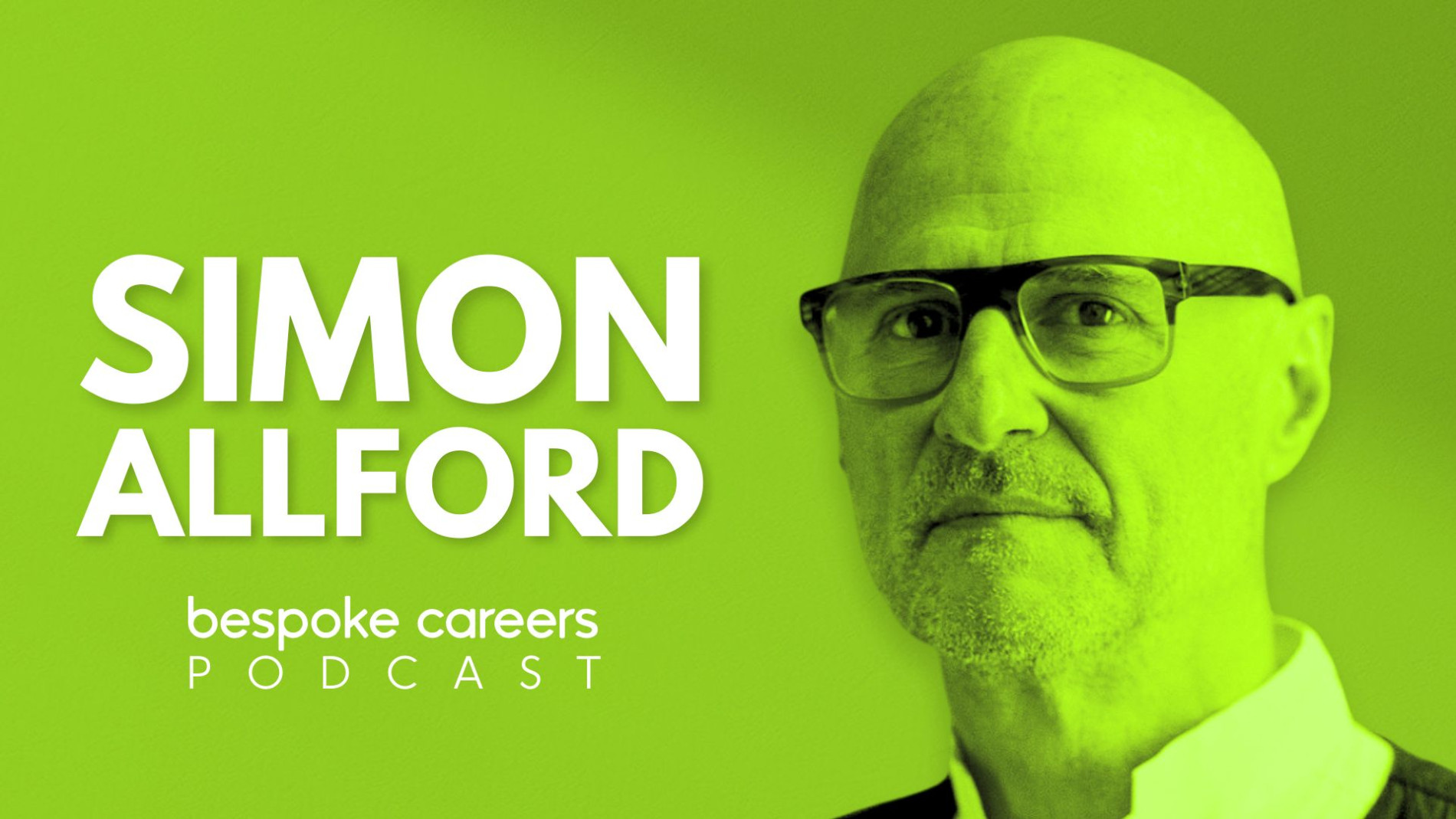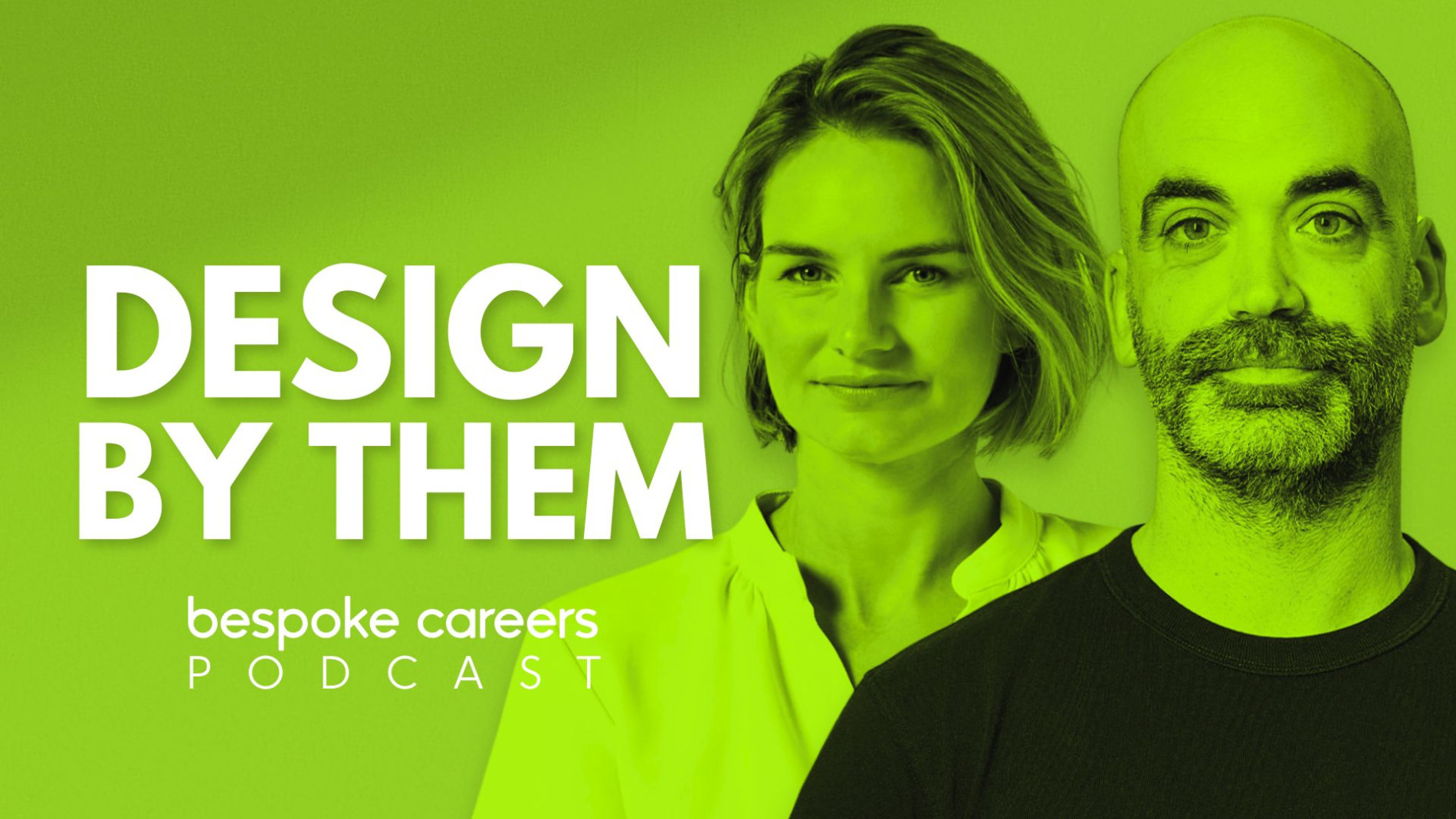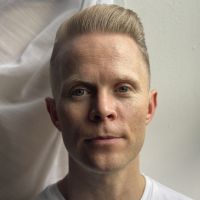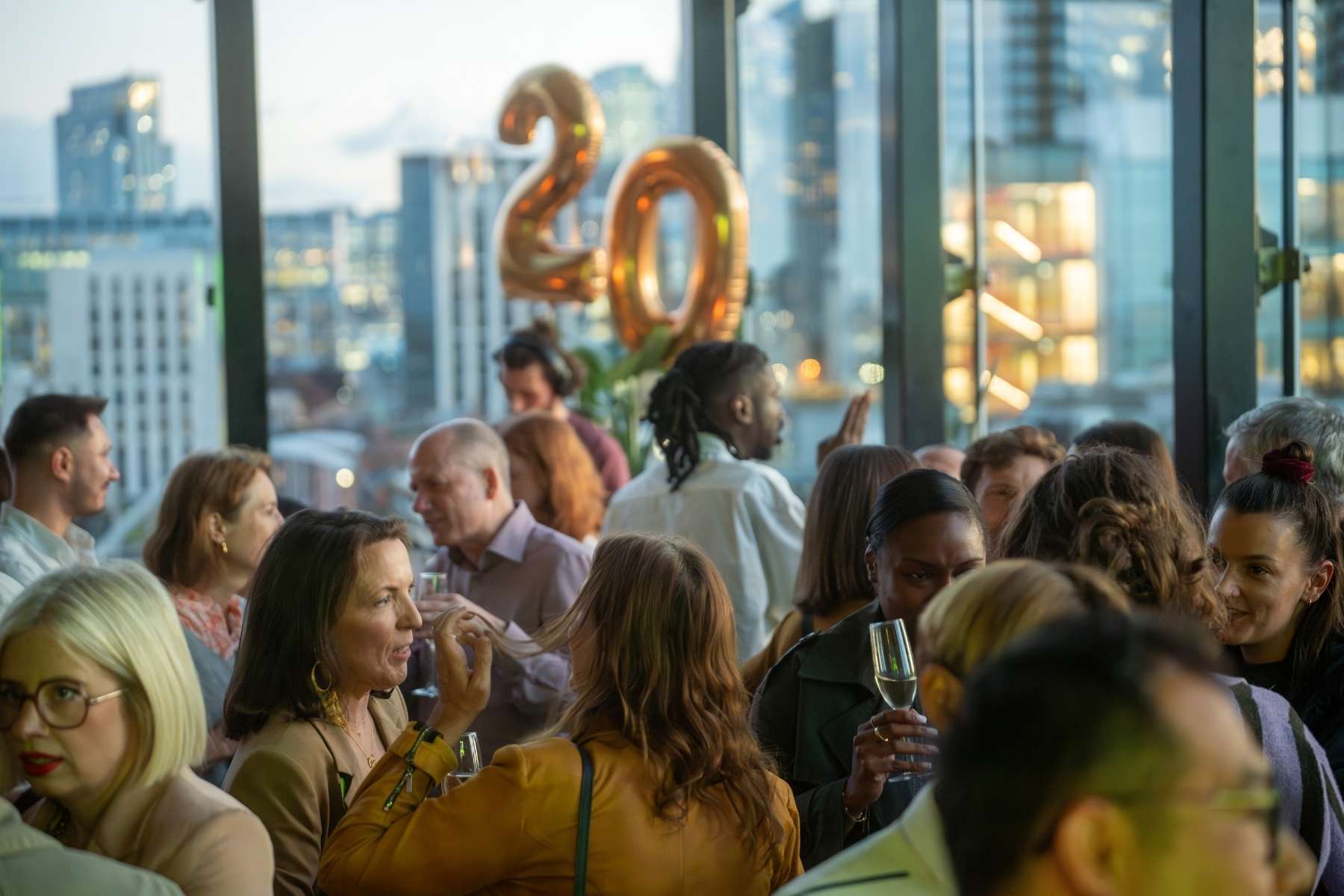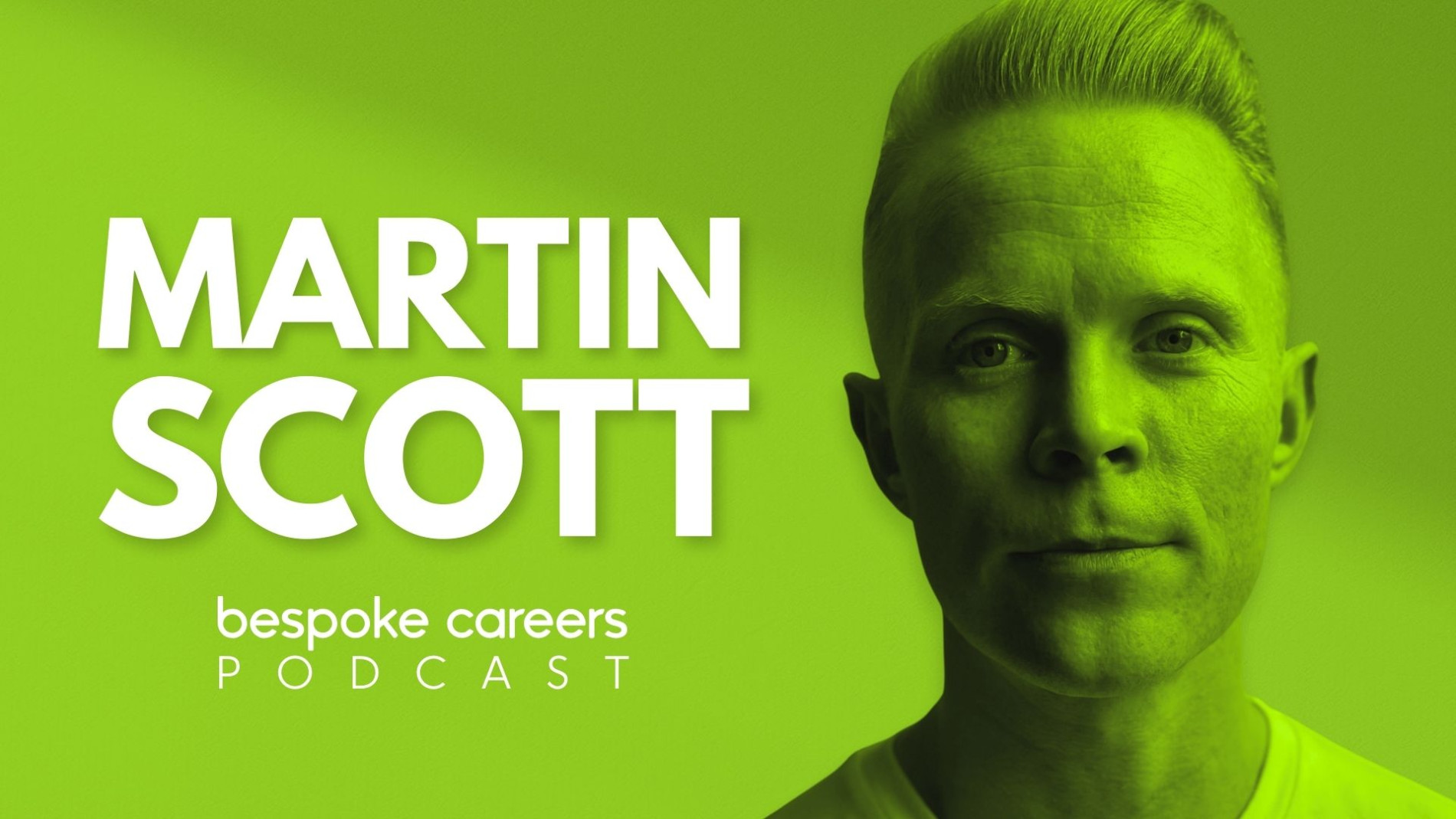
Martin Scott on architecture, inclusion and speaking up
Martin reflects on his journey from rural Tasmania to New York, the balance between creativity and technical skill in architecture, and his work as an advocate for queer visibility and inclusion through Build Out Alliance.
From cubbies in the bush to projects in Melbourne, London, and New York, Martin’s career has spanned continents, practices, and passions. Now an Associate at FXCollaborative, he reflects on what drives him as an architect and his advocacy for diversity through Build Out Alliance.
Why architecture?
It’s multiple things. Architecture is a creative industry, but it’s also a good mix of a lot of different skill sets. I’m a creative person, I think that kind of comes naturally. But there’s also a lot of complexity to it too. The technical side paired with the creative side is what really interests me.
I love a challenge and I love solving puzzles and every day I’m faced with definitely a challenge or two. That keeps me excited. I know I’m always learning. Having that creative side to it as well is a big part of it.
It never gets dull. There are some monotonous parts of projects, but that’s always diversified by the stage of a project you’re working on or the design of the project or the client themselves and what they actually need. And then also keeping in mind what the end user is going to get. That’s quite an exciting part too, knowing that you’re designing this for someone ultimately to make sure that you’re providing whatever it is they need to make them enjoy the end product that they get.
On his route into architecture…
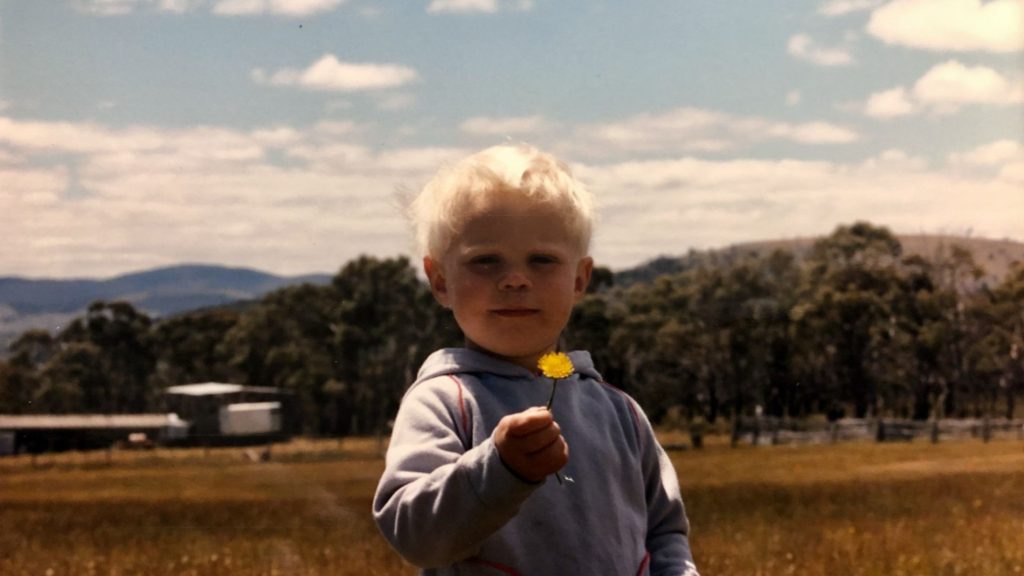
Martin as a child in rural Tasmania.
My decision to go into architecture didn’t happen until later on in high school. But in the background I think back to how I grew up and I grew up on a small farm in Tasmania and was always exposed to a creative mindset. My dad was an engineer and my mum was a teacher, and she was quite creative too in art. Having those two paired, a technical mindset and a creative mindset, unconsciously prepared me for the architecture world.
I have vivid memories like when I was really little, Dad would be tinkering in the shed and he’d bring out a green bucket of nuts and bolts and a tin of nails and just put them out the front with some tools and offcuts of wood and say, “Do what you want and be creative with it.” So I just built little models. From a really young age I had that opportunity to be creative.
We’d go out into nature, amongst the bush and with animals. Having that open-mindedness to go exploring and build cubbies and houses out of vegetation and bits and pieces around you put in my mind that I could be creative and build things myself.
Later, doing DIY projects with the family, all us kids would help whenever Mum and Dad needed a hand. We were always building things. When I went into architecture school I was able to put some of those early skills to use and actually formalise some of my training.
On architecture school…
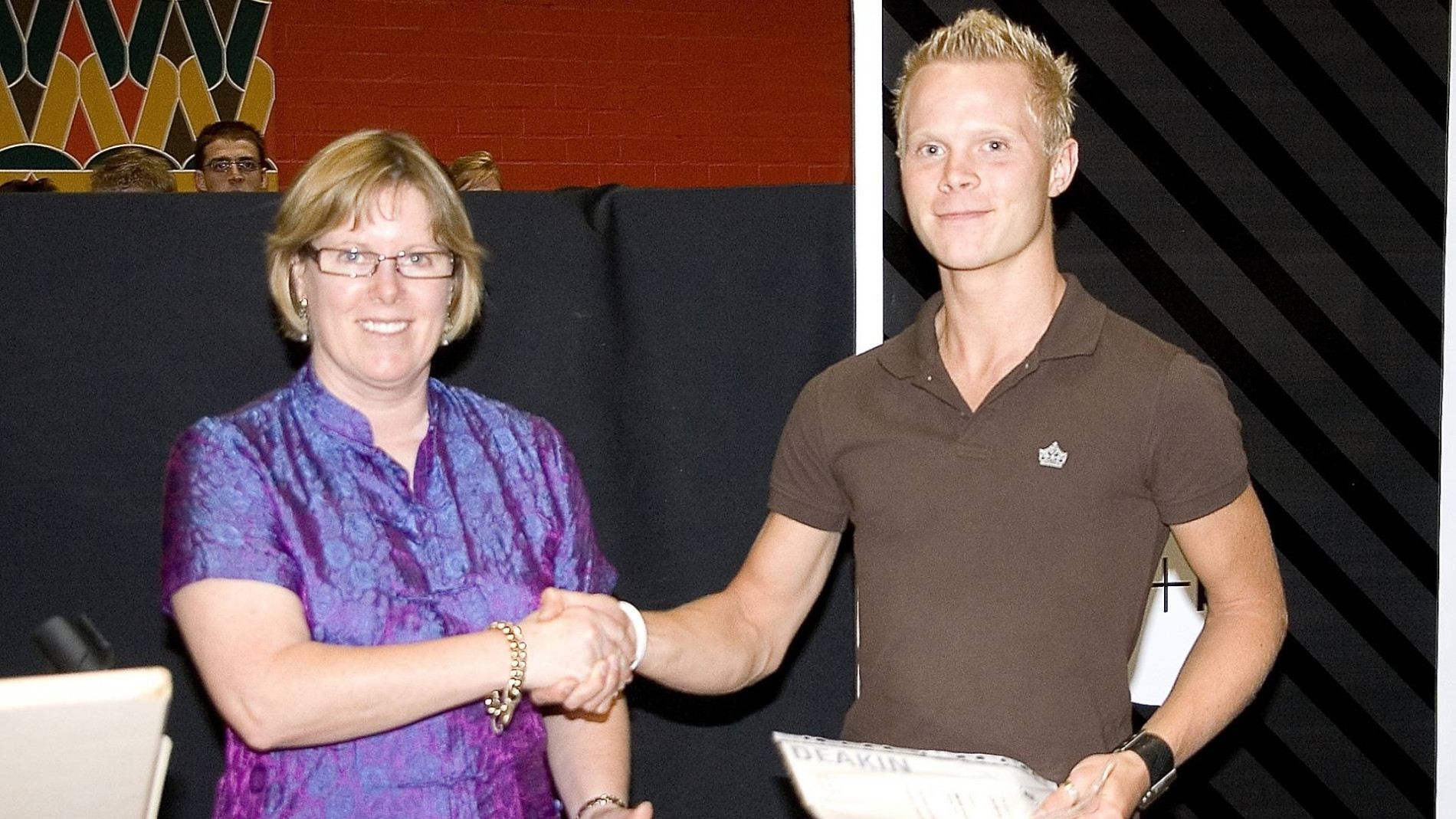
Martin accepting award during his studies
Being open to criticism is hard, but I was always open to receiving it. You have to not take things personally, which is difficult because when you put your design out there you’re putting yourself out there. This project represents you and you’re putting personal elements into it.
To receive criticism on that can be difficult, but I’ve always had the mindset that I’m going to learn from whatever it is other people take from my work and I can use that however I best feel. They’re not doing it maliciously, they’re doing it to give you honest, good feedback. That’s valuable.
On his early career in Melbourne and London…
First moving to Melbourne was a big culture shock, going from small Tasmania to Melbourne. I loved that change and being in such an urban context.
At Denton Corker Marshall in Melbourne I learned about their London office and that planted the seed that one day I could work there. I started at Denton Corker Marshall as a student. One of the tasks as a student was to set up conference calls. It wasn’t just clicking a Zoom button back then, there was stuff to set up. I remember setting up a call with some of the partners for the 2012 London Olympics Athletes’ Village. Seeing everyone in London pop up planted that seed that there was another office over there and they were working on exciting projects.
There was also the Stonehenge Visitors Centre going on. It was exciting thinking about all the things happening in Europe. While Melbourne is a big city, it’s still geographically quite isolated. Being in a context like Europe, so close to other countries and projects, was really appealing.
Once I moved over to London it was really exciting, because there was a lot more exposure literally right next door to these other countries. Living in London itself, such a big and diverse city, was a huge drawcard.
On differences between the offices…
Melbourne was about 100 people when I was there. London was about 25. So while it was the same firm and the same protocols for projects, the dynamics were different. Smaller teams, generally smaller projects.
It was like a miniature version of the Melbourne office. Friday night drinks were more intimate. The area where the office was located, Clerkenwell, was beautiful.
Day-to-day project running had more to do with office size than geography. The UK had differences in project stages and terminology, and licensing too, but more or less it was the scale that changed.
On getting licensed in the UK before moving to New York…
A lot of people might think why get licensed in the UK and then move soon after. But in getting licensed you learn a lot regardless. I still have that license, I still renew it, I still maintain my CPD hours. It’s still useful.
There isn’t reciprocity between New York and the UK, so I’d need to do my exams again here. But there is reciprocity between the UK and Australia, so I could go that way too. Maybe eventually I’ll be licensed in all three countries.
The process in the UK was complex because my bachelor’s were done in Australia. I did my Part 3, then had to go through the process of getting reciprocity for Part 1 and Part 2 in the UK. That all took about a year. It was long-winded, but I have no regrets. It opens doors for the future.
On moving to New York…
It’s such a dense concentration of diverse architecture. A lot of good, a lot of bad, a lot of mediocre, but all in such a small area.
I did trips to New York when I was living in London and each was inspiring. I could see projects I’d studied at university, all close together.
There’s also the buzz you get in New York. Living within that is exciting. Going to work each day in Manhattan, even though it’s a commute, gives you that buzz. Moving here was about seeing another part of the world and living it, not just being a tourist.
On his role at FXCollaborative…
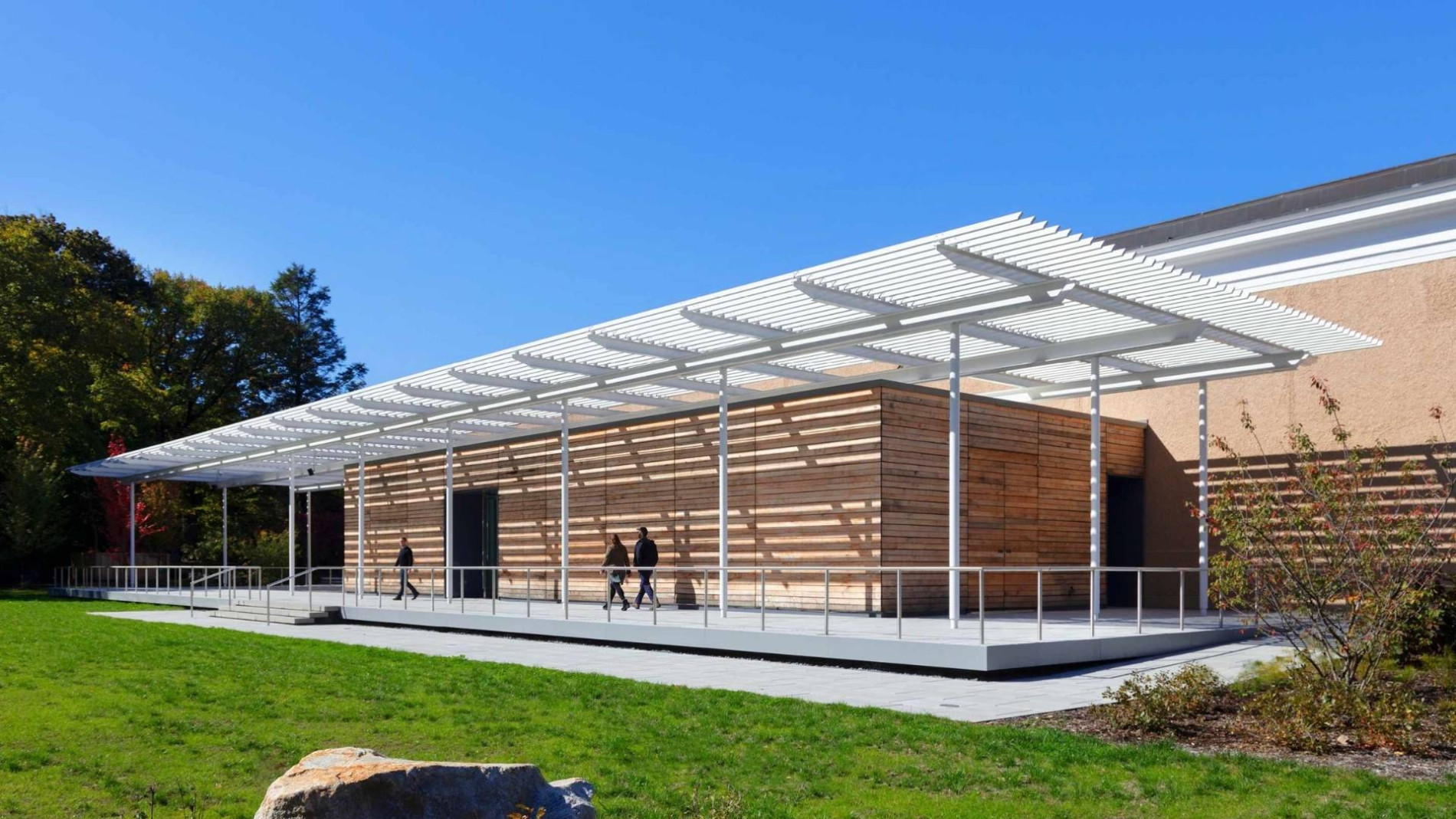
David Rockerfeller Creative Arts Centre, FXCollaborative, completed 2022
For me, having a broader skill set is important. It helps me take on projects and lead projects. If I were to specialise, it might limit opportunities.
I get excited about working on a façade detail, but I also enjoy crafting a finely detailed millwork detail. As architects we need to know how to do all of it. To lead projects and help our teams, we need at least some knowledge of all facets.
Diversifying experience across stages of projects, across scales and typologies, is the most valuable opportunity.
On leadership…
Understanding your team’s skill sets, where they can best be plugged in, but also what they want to learn, is important. That usually leads to them doing their better work and enjoying it more, which equals a happy team.
Understanding schedules and time constraints is key to meeting deadlines and producing quality work. Building a good relationship with the client from the beginning and earning their trust is essential.
If it gets to construction, working well with the contractor is critical. It can be tense, but creating a good environment matters.
On differences working in New York…
One big difference is in the roles. In New York you have design architects or technical architects, with a clear difference. In my experience elsewhere, if you’re an architect, you do both.
Some may not mind just being technical, but I think architects should have design exposure, technical exposure, all of it. That’s a big difference here.
Other differences like contract types and codes just require learning. Even switching from metric to imperial has been a process. There have been embarrassing instances with wrong scales or sheet sizes. But now I think in feet and inches when I’m here, and switch back to metric in Australia. It’s like a language.
On Build Out Alliance…
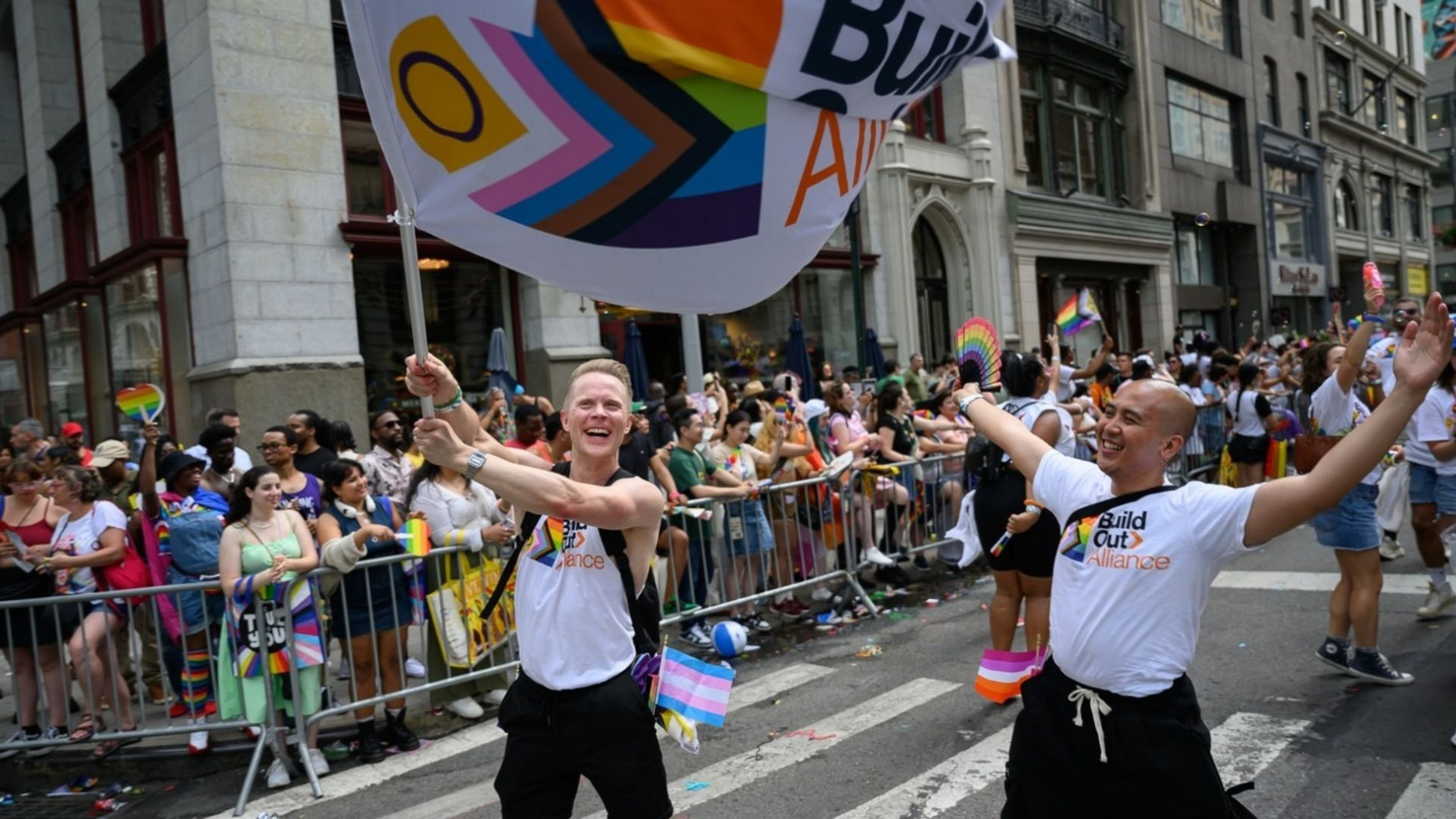
Martin at New York Pride with Build Out Alliance.
Build Out Alliance is a nonprofit since 2018. Our mission is to provide advocacy and support for LGBTQ+ people within the building design and construction industry.
I first got involved at FXCollaborative through a colleague. I joined the professional programming committee, co-chaired it for a few years. We ran educational and informative events, like career-building workshops for students, and panel events bringing in queer architects to talk about their experiences.
Often there’s been a lack of advocacy and support in our industry. Providing that network is important. Whether it’s to talk about a bad experience, to find a mentor, or just connect.
I didn’t come out until 30, well into my education. There are difficulties when you’re closeted. As a gay architect, my main goal is to be a good architect. That’s who I am. But when you’re using your energy making sure you’re not too gay or saying things correctly, that energy isn’t going into your work.
Build Out Alliance started in New York but now has LA, San Francisco, Chicago, and DC chapters. It’s a growing organisation, providing support at a national and community level.
On inclusivity in the industry…
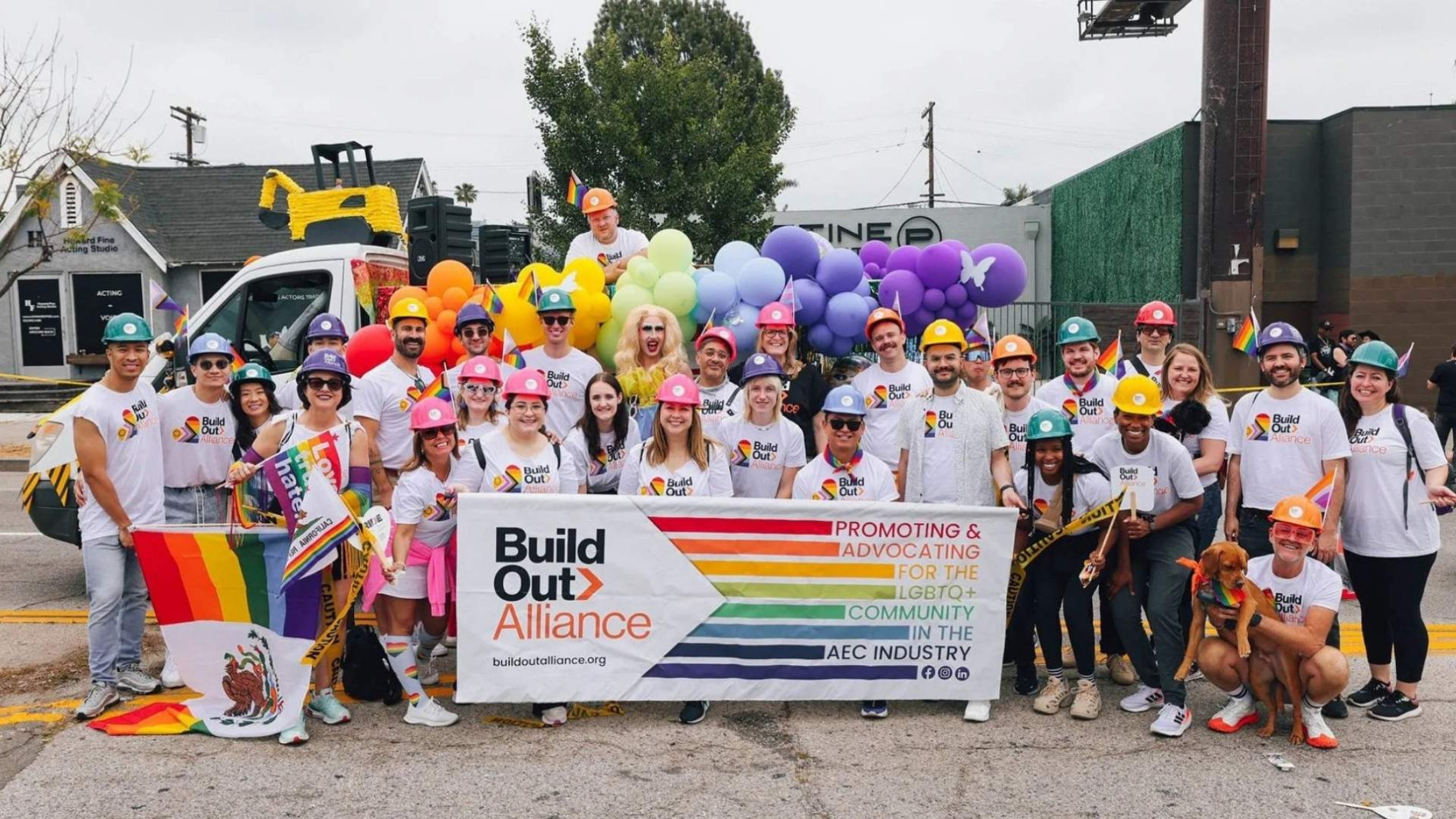
Build Out Alliance Greater Los Angeles.
I probably experienced more homophobia in Australia than London or New York, but as I’ve moved the world has progressed too so it’s hard to compare. It’s promising to see the industry diversifying more, though there’s still a long way to go.
Other industries like contracting have been less diverse, but they’re changing too. Part of our duty as architects is to care for others in the working environment. If I see or hear something, I speak up. Just saying “that’s offensive” can plant a seed.
Sometimes the environment is difficult, a room full of conservative people, but if I don’t say something maybe no one else does. Advocacy is important.
Being present and open about who I am, not hiding it, helps. Speaking up for the whole community, especially trans and non-binary people being targeted more, is crucial.
On the value of networks…
When you’re in a straight environment, you subconsciously use energy code-switching. When you’re in an environment where everyone is queer, you can focus wholeheartedly on the discussion and be 100% who you are. That’s really constructive and freeing.
On architecture schools and inclusivity…
When I studied, there wasn’t much focus on inclusive design. Inclusive can mean accessibility, or designing for different community groups. If you’re designing in a neighbourhood, you should be designing for that community.
In the US, some cities were literally divided by segregation and redlining. Those patterns are still there. There’s a lot of work to undo the damage. Awareness from the beginning is vital, so inclusivity isn’t an afterthought or token gesture.
On his career so far…
I feel like I’m only partway through. I’m glad I’ve taken opportunities, moving to New York, moving to the mainland from Tasmania. If there’s an idea you have, a reason behind it, work out why and then do it.
Yes, it’s difficult to move countries. But there are people out there who can help you. One thing that helped me was doing a year-by-year plan. Mapping everything out makes your career look short, but it helps.
That plan evolves, but it helps keep you on track. For me, it wasn’t about saying I’ll be at this firm in this city. It was about what experiences I wanted.
I never thought I’d become more of an advocate for the queer community in our industry, but I’m so pleased I have. It’s a core part of who I am as an architect.
On the future…
I don’t have timelines. I’m enjoying where I am now, continuing to work on complex projects, hopefully larger scale projects, continuing to diversify my experiences and skills.
With Build Out Alliance, I want to continue spreading the mission and helping the group grow.

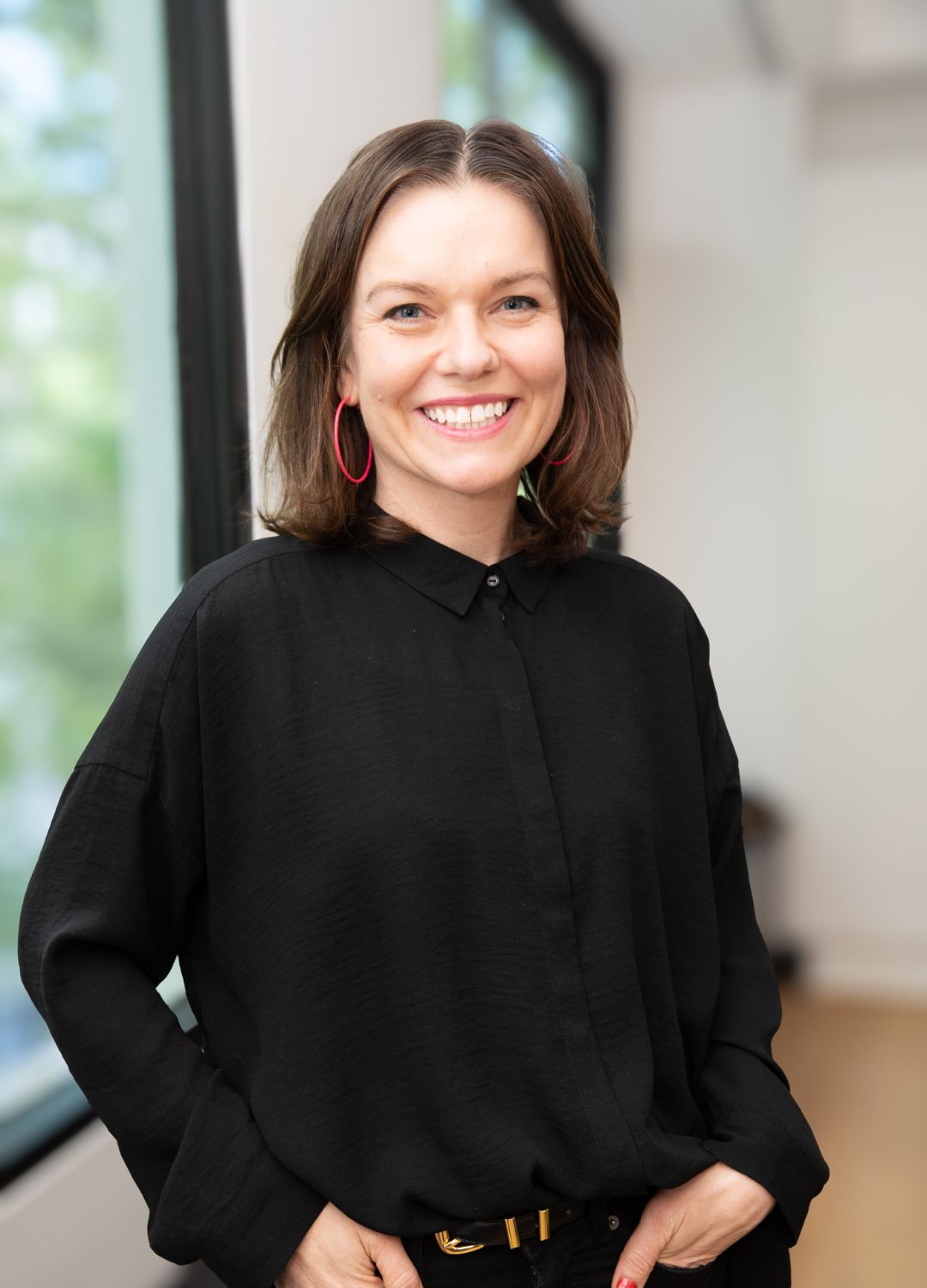
Looking to hire top talent
 or advance your career? Let's talk.
or advance your career? Let's talk.
We connect exceptional firms with talented professionals.
Let’s discuss how we can help you achieve your goals. Get in touch with the team today.
Related Posts

The new year offers another enticing schedule of events for architects and designers of all persuasions.
What does it take to become a successful architect? How do you build an award winning practice culture? How do we fix the housing crisis? And are architects still hungry enough to make a difference?
The Bartlett In-Person Postgraduate Open Evening
Discover The Bartlett’s renowned postgraduate programmes during this informative evening with faculty and student insights.
